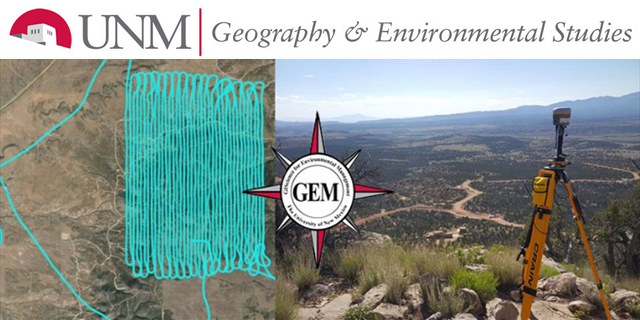
Geography ETDs
Publication Date
6-26-2015
Abstract
The north-central portion of the State of New Mexico has an extensive distribution of geographic names applied to landscape features from documented sources and from living oral tradition. Many of these geographic names originated from three distinct socio-linguistic groups, among which are names in three languages applied to single features. The three primary languages involved are Tewa, Spanish and English. Names that apply to topographical features and a selection of man-build features on the landscape were collected, mapped, and useful approaches to analyze them were developed from literature on toponymy, the study of place names. This study offers an analysis of the place names of the three socio-linguistic groups by classifying the names using a typology initially developed by the toponymist George R. Stewart but modified for use by this study. The typology assisted the comparison and contrast of naming practices of the namers and those who have used them over generations since. An area was selected for this study that employed names found in the database of the U.S. Board on Geographic Names associated with four U.S. Geological Survey 7.5 minute topographical maps named from east to west San Juan Pueblo, Chili, Vallecitos, and Polvadera Peak, New Mexico. To these quadrangles containing an area 28 miles long and 8.6 miles wide was added a considerable quantity of names discovered in literary sources ranging from John P. Harrington's 1916 Ethnogeography of the Tewa to deed documents recorded in the Rio Arriba County Clerk's Office. Another considerably large quantity of names was obtained from oral tradition and local common use accumulated over decades of time. The study area embraces San Juan Pueblo, a populated place of Pueblo Indians that speak the Tewa language, thence westward about eighteen miles to and including the summit of Cerro Chicoma in the west. San Juan Pueblo (Ohkay \xd3w\xeengeh) serves as a node and Cerro Chicoma as the west of four cardinal mountains defining a homeland of the Tewa speaking people of Ohkay \xd3w\xeengeh. Upon this study area a collection of Tewa names was mapped and used as the platform to initiated two more layers of Spanish and American English names. This study employed the visualization mapping tool Google Earth\u2122 to provided a computer generated terrain model upon which a collection of place names were mapped and color coded by language. Appendices F, G, and H of this study provide illustrations of this phase of the analysis by symbolically representing the place names as colored placemark points or linear features upon the of aerial imagery. An in-depth analysis was then developed for each name to provide its location, examine the name's meaning, the name's history (if known), and the name's significance in the cultural landscape. An extensive catalogue of annotated place names found in the study area was developed and appears in Appendix D that provides the reader with these textual details of the inventory of geographic names. The typology developed for this study was applied to each place name that is presented as a spreadsheet list in Appendix C. This study limited the inventory of names to topographical features and a selection of man-built features on the cultural landscape using feature class definitions developed by the U.S. Board on Geographic Names (Table 9). The complete list is presented in Appendix B. A glossary devoted to generic names for geographic features in the three languages that appear in the study area and that appear as part of the place names herein presented are listed in Appendix A. These assist the reader to better understand definitions such as for a cerro or arroyo in this study. Because this study found government representation of officially designated names in the study area to be disproportionately in American English, Appendix E is provided listing the American English name inventory. The inventory of names, their annotations, and classifications were part of the method to compare and contrast the world views the name collection provides for each socio-linguistic group. Place names were found to be linguistic artifacts reflecting the physical, social, and spiritual norms of human-environment interaction of the past and present. The typology reveals that the Spanish socio-linguistic group underwent a process of nativization while naming features on the landscape during that history of human-environment interaction.
Degree Name
Geography
Department Name
Geography
Level of Degree
Masters
First Committee Member (Chair)
Lane, K. Maria D.
Second Committee Member
Lamadrid, Enrique R.
Document Type
Thesis
Language
English
Keywords
Toponymy, Place Names, Geography, Tewa Language, New Mexico Spanish, Rio Arriba
Recommended Citation
Valdez, Roberto H.. "A CASE STUDY IN TOPONYMY: SAMPLING AND CLASSIFYING A TRI-LINGUAL PLACE NAME INVENTORY FOUND IN THE NORTH-CENTRAL STATE OF NEW MEXICO." (2015). https://digitalrepository.unm.edu/geog_etds/29
